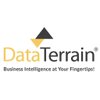Python and Django Developer
100+ Python and Django Developer Interview Questions and Answers
Asked in Xeroeta Technologies

Q. What happens when you enter a URL in the Chrome URL bar?
Entering a URL in the Chrome URL bar initiates a request to the server hosting the website.
Chrome sends a request to the server hosting the website
The server responds with the website's HTML, CSS, and JavaScript files
Chrome renders the website using the received files

Asked in Freelancer.com

Q. How do you optimize the performance of a Django application?
Optimize Django performance by using caching, database indexing, and efficient query practices.
Use caching strategies like Memcached or Redis to store frequently accessed data.
Optimize database queries by using select_related and prefetch_related to reduce the number of queries.
Implement pagination for large datasets to avoid loading all records at once.
Use Django's built-in database indexing to speed up query performance.
Minimize the use of middleware and third-party apps th...read more
Python and Django Developer Interview Questions and Answers for Freshers

Asked in DataTerrain

Q. How can you fetch API data in Django from a server using parameters to dynamically fetch data based on query parameters such as username, email, mobile number, registration number, or registration date?
To fetch API data in Django from server using params dynamically.
Use Django's HttpRequest object to access query parameters
Extract the query parameter value using request.GET.get('querydata')
Use the extracted value to dynamically fetch data from the server
Asked in Xeroeta Technologies

Q. Which are all the design patterns used in the Django? Explain MVC Design Pattern
Django uses Model-View-Controller (MVC) design pattern.
Django follows the Model-View-Template (MVT) pattern, which is a variation of MVC.
Model represents the data and business logic, View handles user interface and Template defines how data is presented.
MVC separates the application into three interconnected components: Model, View, and Controller.
Model represents the data and business logic, View handles user interface and Controller manages the flow between Model and View.
E...read more
Asked in Vishleshan Software Solutions

Q. What is the difference between the `get` and `filter` methods in query sets, how can you retrieve data for a person whose name starts with 'S', and what are the return types of `get` and `filter`?
The difference between get and filter methods in query sets in Django.
get method retrieves a single object that matches the query criteria, while filter method retrieves a queryset containing all objects that match the query criteria.
To retrieve data for a person whose name starts with 'S', you can use filter method with the query {'name__startswith': 'S'}.
The return type of get method is a single object or raises a DoesNotExist exception if no object is found, while the retu...read more
Asked in StudentSpace

Q. How can you see raw SQL queries running in Django?
You can see raw SQL queries in Django by printing the queryset or using Django's logging capabilities.
Print the queryset to see the raw SQL query: print(queryset.query)
Use Django's logging capabilities to log SQL queries: import logging and set up logging configuration
Python and Django Developer Jobs



Asked in Vishleshan Software Solutions

Q. Can you provide an example of code for an API that implements the same logic using different methods, such as GET, POST, PUT, and DELETE, to retrieve all details from a model?
Example code for an API implementing CRUD operations on a model using different HTTP methods
Use Django REST framework to create API views for each HTTP method (GET, POST, PUT, DELETE)
Define URL patterns in Django's urls.py to map to the corresponding API views
Implement logic in the API views to interact with the model and perform CRUD operations
Use serializers to convert model instances to JSON data and vice versa
Asked in StudentSpace

Q. What is the Django REST Framework?
Django REST Framework is a toolkit for building web APIs in Django, providing tools for serialization, authentication, and viewsets.
Provides tools for serialization, authentication, and viewsets
Makes it easier to develop RESTful services in Django
Includes features like serialization, authentication, and view classes
Share interview questions and help millions of jobseekers 🌟


Asked in DataTerrain

Q. In Django, with migrations A, B, C, and D applied, how would you revert to migration B after making new changes E?
To revert changes made in Django migrations, use the command 'python manage.py migrate <app_name> <migration_name>'.
Use the command 'python manage.py showmigrations' to list all migrations and their names.
Identify the migration name you want to revert (e.g., 'app_name', '0002_migration_name').
Run the command 'python manage.py migrate <app_name> <migration_name>' to revert the specific migration.
Asked in Vishleshan Software Solutions

Q. Is AWS Lambda considered serverless, and if an object is stored in your S3 bucket, how can a person in a different region access that object?
Yes, AWS Lambda is considered serverless. To access an object in a different region, you can use S3 Cross-Region Replication or make the object public.
AWS Lambda is a serverless computing service that allows you to run code without provisioning or managing servers.
To access an object in a different region stored in an S3 bucket, you can use S3 Cross-Region Replication to automatically replicate objects across different AWS regions.
Alternatively, you can make the object public...read more
Asked in Vishleshan Software Solutions

Q. What are the SQL queries to find the names of employees that start with the letter 'S' and to count the number of employees in each department?
SQL queries to find employees starting with 'S' and count employees in each department.
Use SELECT statement with WHERE clause to find employees starting with 'S': SELECT name FROM employees WHERE name LIKE 'S%'
Use GROUP BY clause with COUNT function to count employees in each department: SELECT department, COUNT(*) FROM employees GROUP BY department

Asked in DataTerrain

Q. How to use decorator and explain the difference between @login_required and @permission_required in Django?
Decorators in Django are used to modify the behavior of functions or methods. @login_required ensures user authentication, while @permission_required checks for specific permissions.
Decorators are functions that wrap another function to modify its behavior.
@login_required decorator ensures that the user is authenticated before accessing a view.
@permission_required decorator checks if the user has specific permissions before allowing access.
Example: @login_required def my_view...read more

Asked in Wipro

Q. What is decorator in python? What is Django ORM? What is the difference between Docker file and docker compose? count the each letter of the given string and print it in a dictionary form. List comprehension? D...
read moreThis response covers Python decorators, Django ORM, Docker concepts, and differences between Python versions.
A decorator in Python is a function that modifies another function or method.
Django ORM (Object-Relational Mapping) allows developers to interact with the database using Python objects instead of SQL queries.
A Dockerfile is a script to build a Docker image, while Docker Compose is a tool to define and run multi-container Docker applications.
To count letters in a string...read more

Asked in Altera Digital Health

Q. What design patterns are you familiar with?
I am familiar with several design patterns including MVC, Singleton, Factory, and Observer.
MVC separates the application into Model, View, and Controller components.
Singleton ensures only one instance of a class is created.
Factory creates objects without specifying the exact class to be created.
Observer allows objects to be notified of changes to a subject.
Asked in Vishleshan Software Solutions

Q. Why do you prefer using ViewSet over ModelSet when writing APIs?
ViewSets provide a simple way to create CRUD APIs with less code compared to ModelSets.
ViewSets reduce boilerplate code by providing default implementations for common actions like create, retrieve, update, and delete.
ViewSets allow for more flexibility and customization compared to ModelSets, as they can be easily extended and customized to fit specific requirements.
ViewSets are more concise and readable, making it easier for developers to understand and maintain the codebas...read more
Asked in Vishleshan Software Solutions

Q. What are the different types of search algorithms, and what is their time complexity?
Different types of search algorithms with their time complexity
Linear Search - O(n)
Binary Search - O(log n)
Depth First Search (DFS) - O(V + E)
Breadth First Search (BFS) - O(V + E)
A* Search - O(b^d)
Greedy Best First Search - O(b^m)

Asked in Netweb Technologies

Q. What is difference between pyhton and Java? How many types of styling in HTML? What is Inline Styling in HTML? What is OOPs in Java code? What is day-to-day work in job looks like? Tell about some linux command...
read morePython is a high-level, interpreted programming language known for its simplicity and readability, while Java is a statically-typed, object-oriented language.
Python is dynamically typed, while Java is statically typed.
Python uses indentation for code blocks, while Java uses curly braces.
Python has a simpler syntax compared to Java.
Java is platform-independent due to its bytecode compilation, while Python is interpreted.
Java is more commonly used for enterprise applications, w...read more

Asked in Neoistone

Q. Is it possible to use multiple databases in Django?
Yes, Django supports multiple databases.
Django allows defining multiple databases in settings.py
Each database can have its own settings like engine, name, user, password, etc.
Models can be assigned to specific databases using 'using' attribute
Queries can be executed on specific databases using 'using' method

Asked in GetWork

Q. which type of function do we create in view.py file and did you work with rest api , and explain right and left join in mysql .
Answering questions related to Python, Django, REST API, and MySQL joins.
Functions in view.py file are used to handle HTTP requests and return HTTP responses.
Yes, I have worked with REST API.
Right join returns all the rows from the right table and matching rows from the left table.
Left join returns all the rows from the left table and matching rows from the right table.
Asked in OneFin

Q. Given a string containing just the characters '(', ')', '{', '}', '[' and ']', determine if the input string is valid. An input string is valid if:\n1. Open brackets must be closed by the same type of brackets....
read moreThis problem involves validating strings of brackets to ensure they are correctly matched and nested.
Use a stack data structure to keep track of opening brackets as they appear.
For each closing bracket, check if it matches the top of the stack; if it does, pop the stack.
If the stack is empty at the end, the string is valid; otherwise, it is invalid.
Example: '()[]{}' is valid, while '(]' and '([)]' are invalid.

Asked in DataTerrain

Q. What are SQL Procedures and Triggers, and when are triggers used?
SQL Procedures are stored SQL code that can be executed on demand. Triggers are special types of stored procedures that are automatically executed when certain events occur.
SQL Procedures are reusable blocks of SQL code that can be called by other programs or scripts.
Triggers are special types of stored procedures that are automatically executed when specific events occur in the database.
Triggers are commonly used for enforcing business rules, auditing changes, and maintainin...read more

Asked in Freelancer.com

Q. Explain the Django request-response lifecycle.
Django's request-response lifecycle involves processing incoming requests, routing them, and returning responses to clients.
1. Request Handling: Django receives an HTTP request from a client (browser).
2. URL Routing: The request is routed to the appropriate view based on the URL patterns defined in 'urls.py'.
3. View Processing: The view function processes the request, interacts with models if needed, and prepares a response.
4. Template Rendering: If the view returns HTML, Dja...read more

Asked in Teleperformance

Q. How do you handle authentication and authorization in Django?
Django provides built-in tools for managing user authentication and authorization effectively.
Use Django's built-in User model for user management.
Implement authentication using Django's authentication views and forms.
Utilize Django's permissions framework to manage user access levels.
Leverage third-party packages like Django Allauth for social authentication.
Use middleware to enforce authentication on specific views.

Asked in GK Power Expertise Private Limited

Q. Write a program demonstrating how to create a class and object, then pass a list to the object and reverse the list using OOP concepts.
This program demonstrates OOP concepts in Python by creating a class to reverse a list.
Define a class named 'ListReverser'.
Create an initializer method to accept a list.
Implement a method 'reverse_list' to reverse the list.
Instantiate the class with a sample list and call the reverse method.

Asked in DataTerrain

Q. How the REST API works and what are the methods are available and explain?
REST API is a set of rules and conventions for building and interacting with web services.
REST stands for Representational State Transfer
Methods available in REST API are GET, POST, PUT, DELETE
GET - Used to retrieve data from a server
POST - Used to send data to a server to create a new resource
PUT - Used to update an existing resource on the server
DELETE - Used to remove a resource from the server
Example: GET request to fetch a list of users from a database

Asked in DataTerrain

Q. What is custom middleware, how do you create it, and can you explain it with example code?
Custom middleware in Django allows for processing requests and responses before reaching views.
Custom middleware is a Python class that defines methods to process requests and responses in Django.
To create custom middleware, define a class with methods like process_request, process_response, etc.
Register the custom middleware in the Django settings.py file under the MIDDLEWARE key.
Example code: class CustomMiddleware: def __init__(self, get_response): self.get_response = get_...read more

Asked in DataTerrain

Q. What is the mechanism for utilizing message queues and caching systems?
Message queues and caching systems are used to improve performance and scalability in web applications.
Message queues help in decoupling components by allowing asynchronous communication between them.
Caching systems store frequently accessed data in memory to reduce database load and improve response times.
Popular message queue systems include RabbitMQ, Kafka, and Redis.
Common caching systems include Memcached and Redis.
Django provides built-in support for caching using the c...read more
Asked in Qubedynamics Technology Solution

Q. What is duck typing in Python?
Duck typing is a concept in Python where the type or class of an object is less important than the methods it defines.
In duck typing, an object's suitability for a particular operation is determined by the presence of the required methods, rather than its type.
It allows different objects to be used interchangeably if they have the same methods.
Duck typing promotes flexibility and code reusability.
An example of duck typing is the 'len()' function in Python, which can be used o...read more

Asked in DataTerrain

Q. How to handle the different type of databases in Django? Have you done before in your projects?
Django supports multiple databases through its database router feature.
Django allows defining multiple database connections in settings.py
Use database routers to route specific models to different databases
Example: routing user data to a separate database for better performance

Asked in Constacloud

Q. What is your experience with CRUD (create, Read, Update, Delete) operations, and how did you implement them in your project?
I have extensive experience implementing CRUD operations in Django for various projects, ensuring efficient data management.
Used Django's ORM to create models representing database tables.
Implemented Create operations using Django forms and views to handle user input.
Read operations were facilitated through Django's generic views and templates to display data.
Update functionality was achieved using forms pre-filled with existing data for user edits.
Delete operations were impl...read more
Interview Questions of Similar Designations
Interview Experiences of Popular Companies





Top Interview Questions for Python and Django Developer Related Skills

Calculate your in-hand salary
Confused about how your in-hand salary is calculated? Enter your annual salary (CTC) and get your in-hand salary


Reviews
Interviews
Salaries
Users










